

Challenge Accepted
The customer’s goal is to create an inviting, safe sitting area with an easily accessible fire pit and eliminate mowing with native plantings. Terracing this very steep grade with vegetation requires extensive knowledge in selecting the best plants suitable for this rocky, shale, alkaline soil in a windy, dry, west-facing, sun-drenched environment. Vegetation is the key to a cooler environment instead of man-made hard structures. Plants have multiple purposes for a healthy habitat, including humans who benefit from the sight, sound, textures, and fragrance in all seasons.

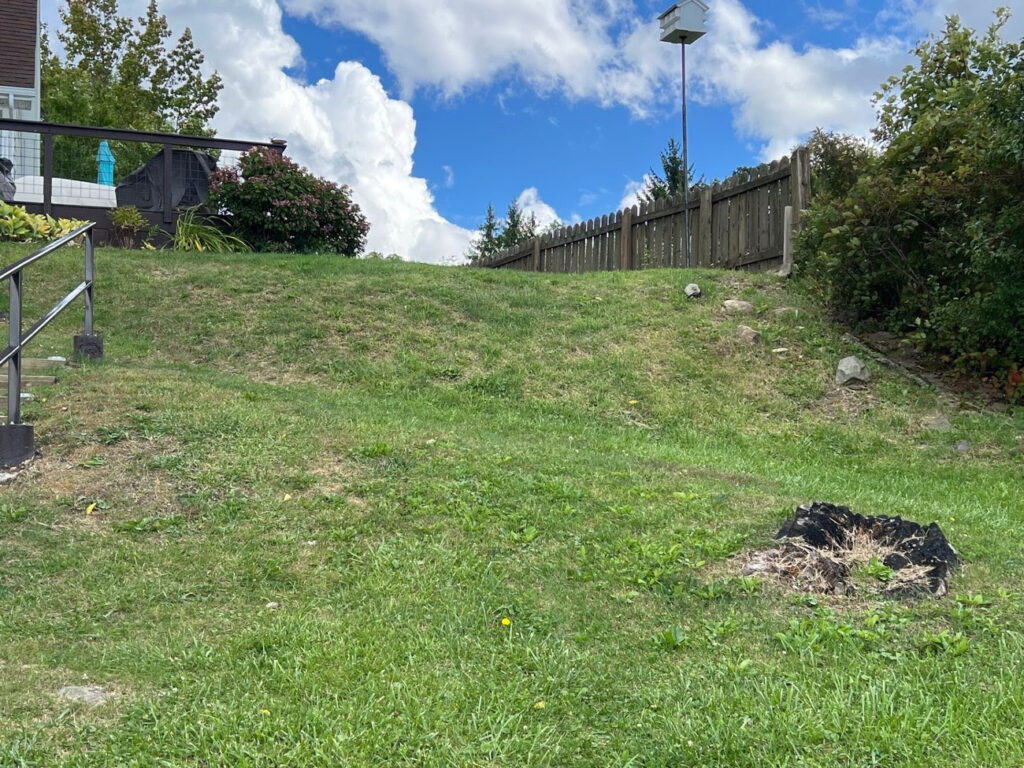
Priority for lakefront properties is to minimize erosion control and follow local and N.Y.D.E.C. guidelines.
The existing grass on the top right slope was cut short so roots helped keep soil stable. Native 2-inch rooted grass plugs and seeds planted into the existing grassy hill to become a tall un-mowed grassy meadow.


We submitted a sketch showing measurements to the town for approval along with a plan for stormwater management. Requesting a permit from the town is important as each municipality may have different requirements. As of 2026, new classifications consider many waterfront properties to be a protected wetland, and the DEC may require permits.


We started at the bottom with a silt fence and hired an experienced equipment operator. To minimize the vegetation disturbed Vincent Broccolo of Broccolo Industries has worked with ski resorts on the sides of the Presidential Mountain range in NH as well as in the tight spaces of NYC.
The drainage behind the wall is necessary to slow down and capture heavy rainfall.
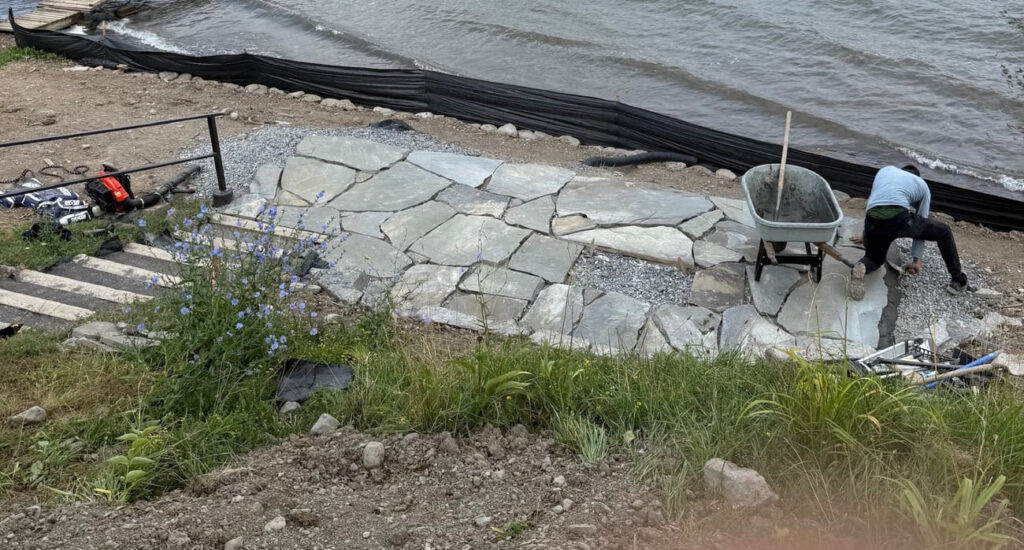
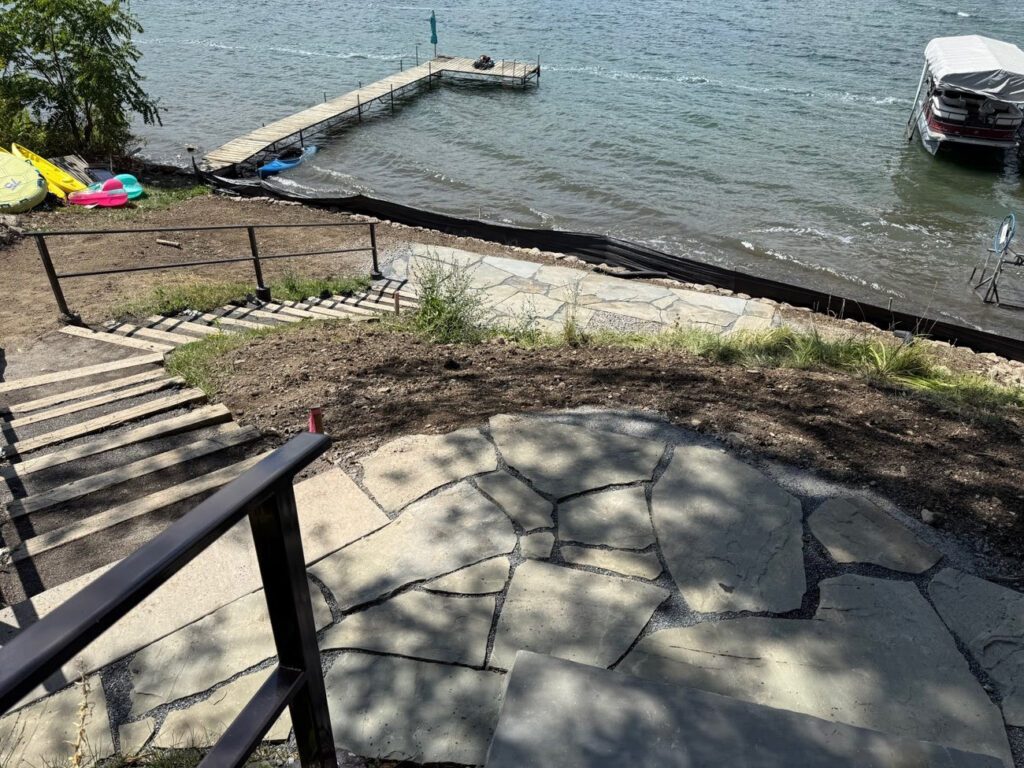
Soil preparation for planting and seeding took place after the stairs, upper and lower patios were stabilized. The planting specifications include tall native grasses, fast growing assertive perennials and lawn pathways designed as buffer vegetation between hard services and the lake.
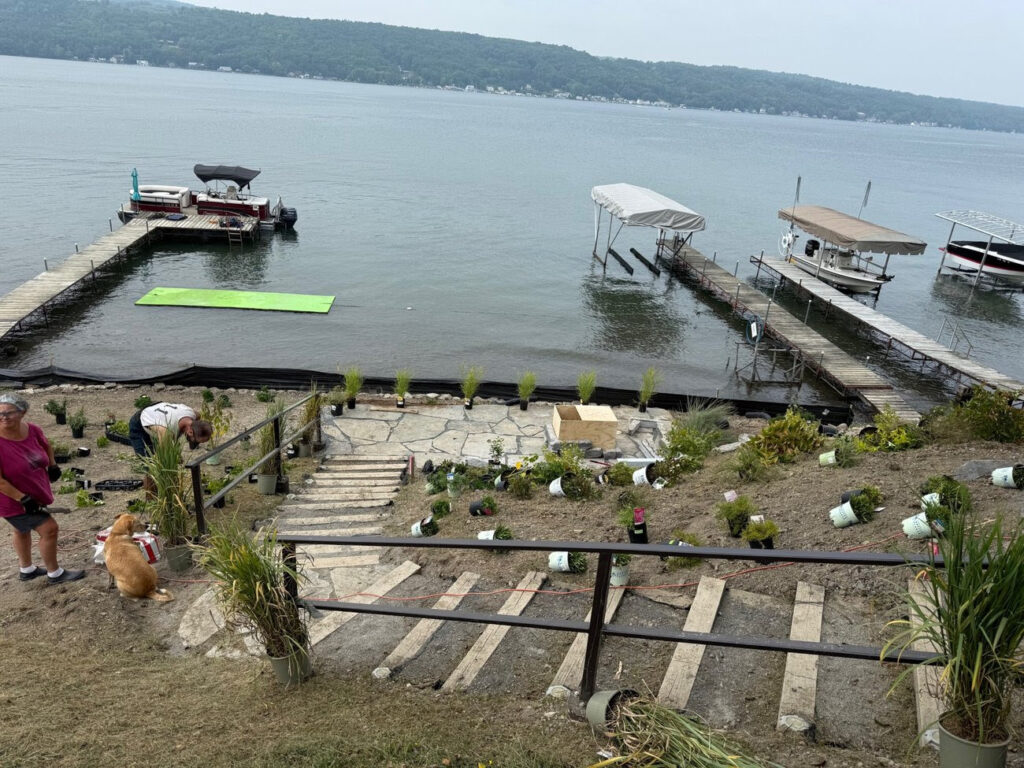
This client was very involved, and installed all plants, which we delivered and placed.

The homeowner mulched the shrubs to help them get the roots established quickly. Straw blankets help protect the grass seed from foot traffic. The lower areas are filled with wildflower perennial plants in 1-gallon sizes, many quart size plants and meadow seed.
Mid-August was critical to take advantage of shorter days which are typically cooler with rain (but not this year.) The grassy meadow on top, the shrubby hill and lower meadows were watered lightly and daily with sprinklers and timers.
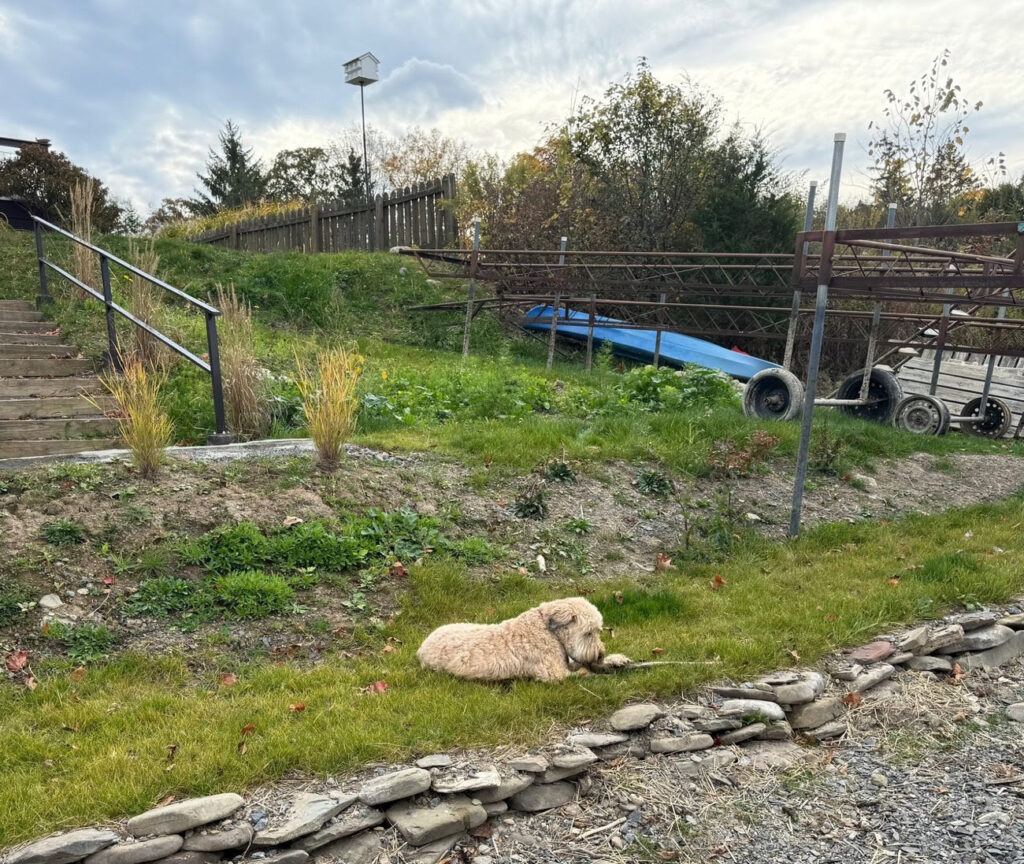
Success after just 8 weeks. Next step is to add more cobbles at the base of the plantings between the grass pathways for a finished look. We look forward to taking more photos when all plants are established next summer.
Let us help you plan next year’s landscape project this winter. Contact us now.